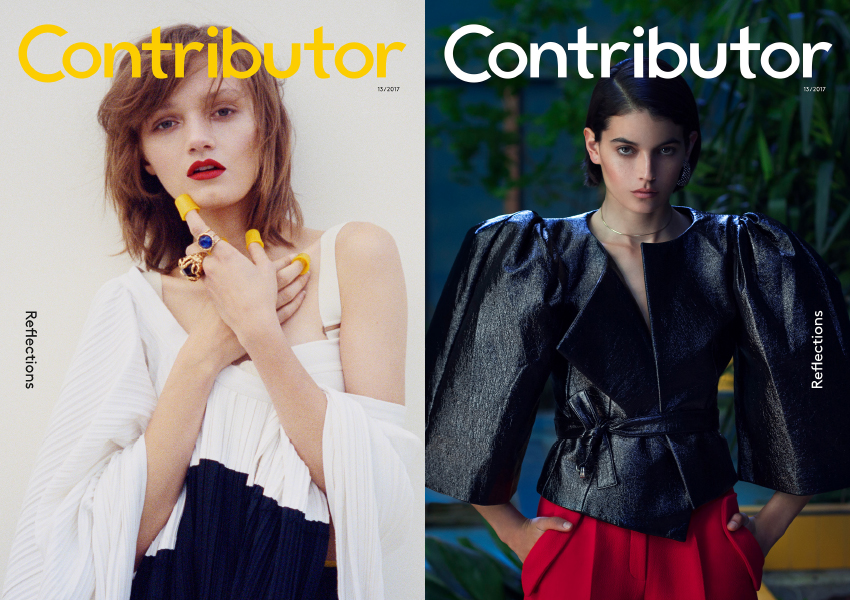
On the cover from left to right: Peyton knight photographed by Magnus Magnusson and styling by Robert Rydberg. Abril Shaw photographed by Magnus Magnusson and styling by Claudia Englmann.
The New Issue of Contributor Is a Box of Reflections
Inside Contributor’s Box of Reflections, you’ll find a collection of eighty prints in three different sizes and one poster. Also available is a limited edition of twenty copies of the box, each including one signed and numbered print from our two cover stories. Signed by the photographer Magnus Magnusson, the C-prints come in the size 30 x 20 cm. Contributor’s Box of Reflections is a true collector’s item. If you’re interested in the limited edition of twenty copies, please e-mail us as info@contributormagazine.com
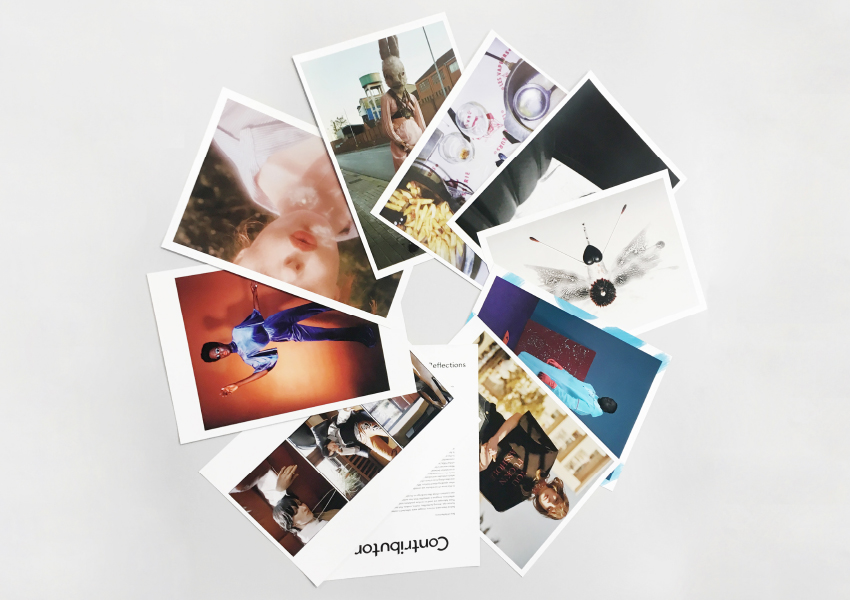
Various pages from the issue, size A4.

Photography by Fredrik Altinell and styling by Robert Rydberg.
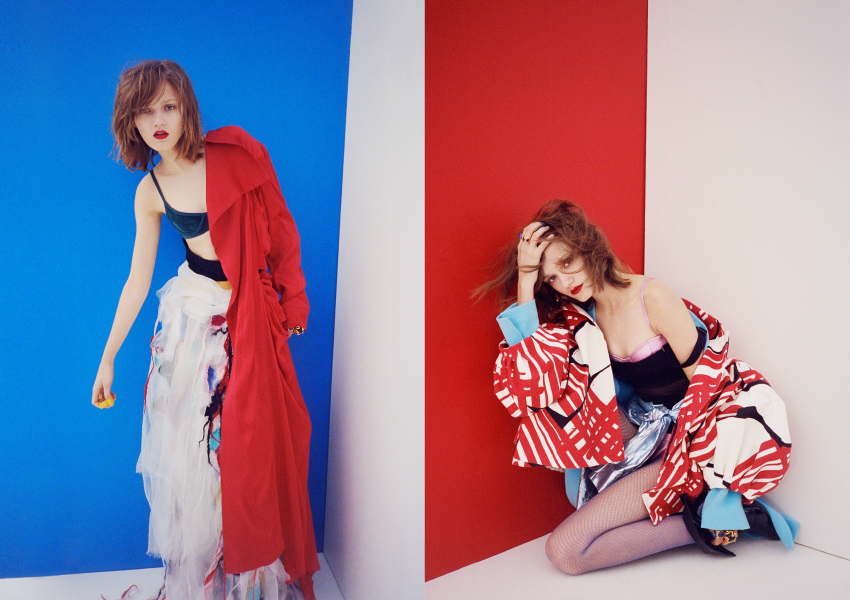
Peyton knight photographed by Magnus Magnusson and styling by Robert Rydberg.

Various pages from the issue, size 42×23,5cm.
About Our Box of Reflections
Before there were mirrors, images were reflected in water or momentarily captured in the human eye. Among butterflies, moths, snakes, fish and frogs, it’s common with eyespots. These fake eyes are used to confuse predators and sometimes they contain highlights to mimic reflections. Imagine a caterpillar that has evolved to mimic a snake’s head, or a butterfly that uses a pattern of eye-like markings on its wings to disorient other animals.
Before there were mirrors, images were reflected in water or momentarily captured in the human eye. Among butterflies, moths, snakes, fish and frogs, it’s common with eyespots. These fake eyes are used to confuse predators and sometimes they contain highlights to mimic reflections. Imagine a caterpillar that has evolved to mimic a snake’s head, or a butterfly that uses a pattern of eye-like markings on its wings to disorient other animals.
In this issue of Contributor we consider reflections, possibly one of the most central concepts when speaking about fashion. When analyzing its meaning through a sociological perspective and describing it as a form of visual culture, people tend to discuss fashion as a mirror through which attitudes and values connected to what’s happening in society come to light. Looking back, the most popular example is George Taylor’s hemline index from 1926 that suggests a correlation between the state of the economy and the hemlines on women’s dresses. When women’s fashion reflected a return to conservative family ideas during the dark days of the 1930s, hemlines fell to above the ankle. Past experience is all we have to go by, and commentators have started to warn against the links between the 1930s and the political shifts in the world of 2017. So, how is fashion reacting to this tumultuous landscape? Well, one thing is for sure, the hemlines are falling below the knee. As with the short, flapper dresses of the 1920s, the easygoing atmosphere of the late 2000s with a lot of nudity in fashion and photography are long gone, and have been replaced with a growing consensus that now is not the time to get naked, rather to cover up your body and be prepared for whatever battle society is facing.
But fashion can be just as deceptive as the highlights in the false eyes on a moth’s wings. It’s a mirror that can distort reality and raises questions of authenticity and truth. Even though the expectations are higher on fashion today to take more of a responsibility when it comes to sexism, racism and environmental issues, it is always going to be characterized by its escapist nature and its ability to generate illusions. When speaking about fashion’s symbiotic relationship to identity, we can look back at Alexander McQueen’s 2001 Spring/Summer ‘VOSS’ collection, where the designer seated the audience around a mirrored cube for what was to become an immortal catwalk show performance. Before the cube revealed a setting reminiscent of a padded cell in a mental hospital, the guests had to stare at their own reflections in the mirrors. When the show began, models acted as if they were trapped inside the box, unable to see through the glass. At the end, writer Michelle Olley became the centerpiece; her masked head attached to a breathing tube with moths and butterflies fluttering around her curvaceous naked body. As much as being discussed as a mirror of society, clothing continues to be described as a visual mirror of our inner lives, a way to articulate our identities through self-fashioning. And there is a lot of space inside this box of reflections, that constitutes fashion, for alternative visions of ourselves.
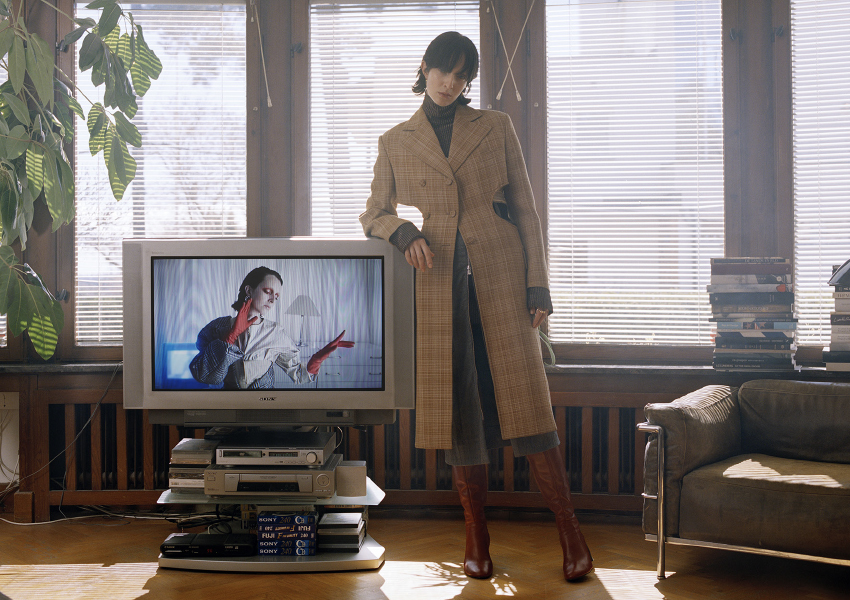
Photography by Ludvig Rönn and styling by Hilda Sandström.

Abril Shaw photographed by Magnus Magnusson and styling by Claudia Englmann.

Various pages from the issue, size 42×23,5cm, A4 and A5.
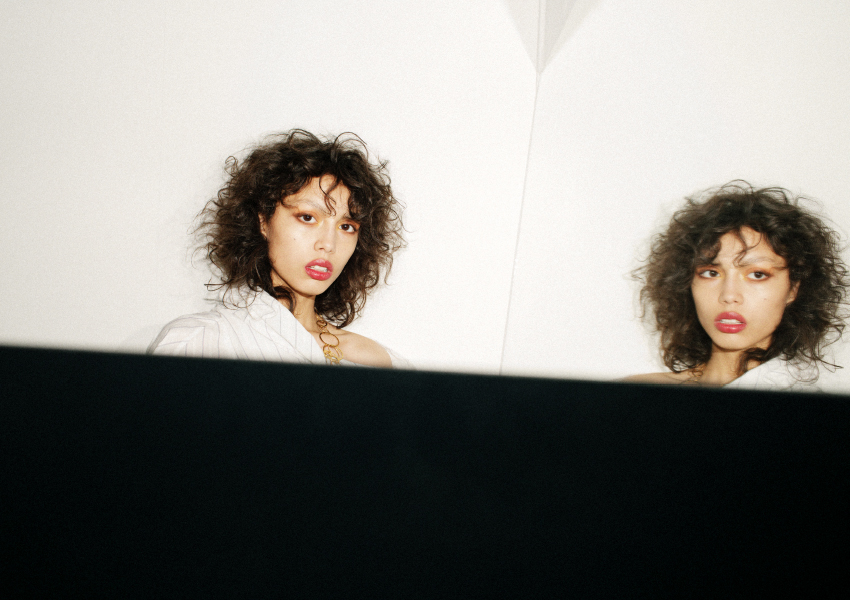
Photography by Märta Thisner and styling by Adam Pettersson.

Photography by Hedvig Jenning and styling by Maria Barsoum.

Photography by Jasmin Storch and styling by Christopher Insulander.
Contributing Photographers
Vasily Agrenenko, Fredrik Altinell, Olesya Asanova, Anna Evstigneeva, Arne Grugel, Hedvig Jenning, Magnus Magnusson, Fredrik Marklund, Camille Mompach, Elina Meuller, Lena Pogrebnaya, Ludvig Rönn, Jasmin Storch, Märta Thisner, Luca Vincenzo and Yolanda Y. Liou
Contributing Artists
Duda Bebek, Ola Bergengren, Estrid Lutz & Emile Mold and Constance Tenvik
Contributing Stylists
Celia Arias, Maria Barsoum, Claudia Englmann, Christopher Insulander, Marieke Merts, Sveta Mikhailyuk, Mattias Nyhlin, Valeria Papa, Adam Pettersson, Robert Rydberg, Hilda Sandström, Seunghee Son and Alie Suvélor
